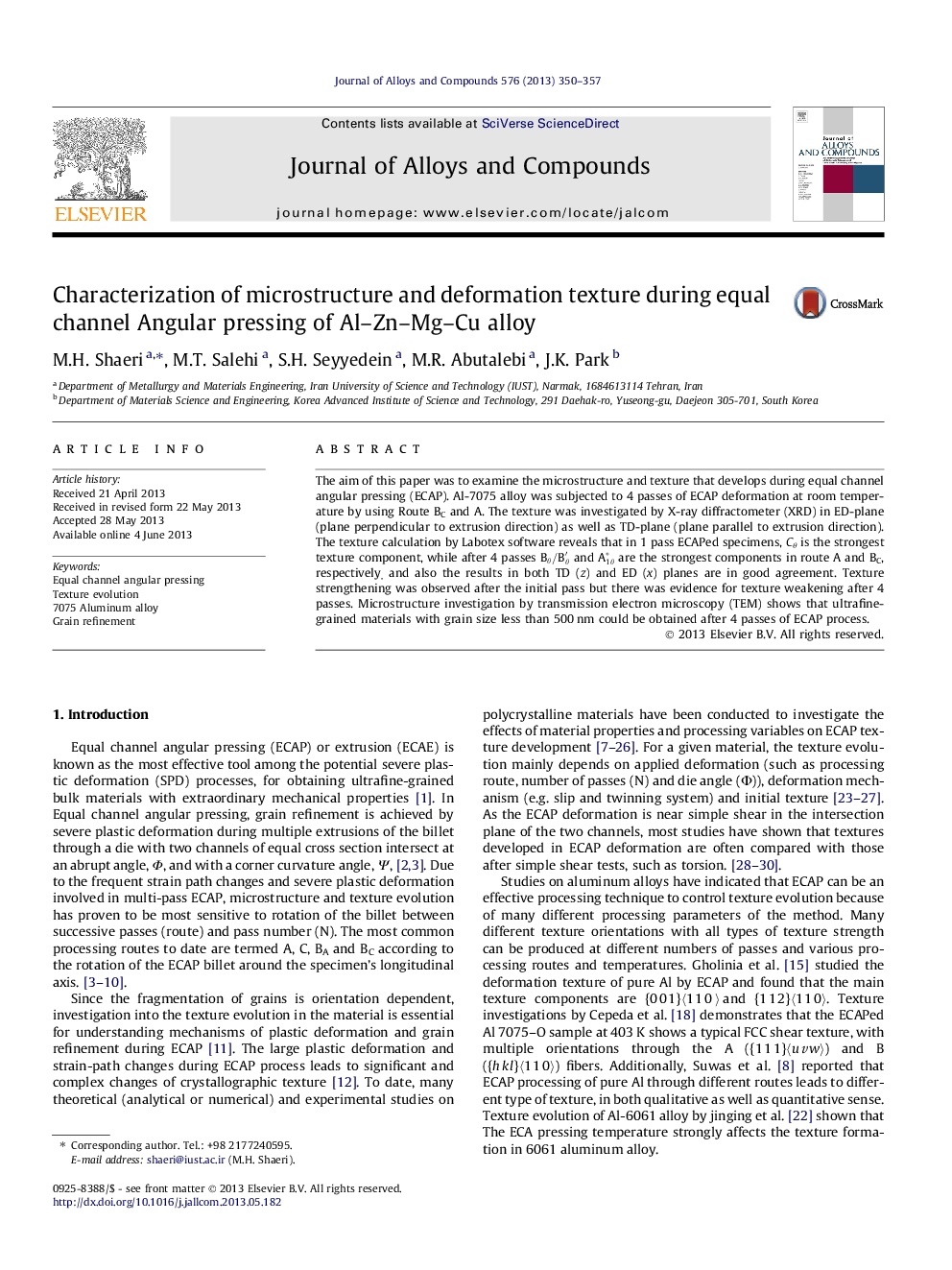| Article ID | Journal | Published Year | Pages | File Type |
|---|---|---|---|---|
| 1613320 | Journal of Alloys and Compounds | 2013 | 8 Pages |
•Microstructure and texture of 1 and 4 passes ECAPed Al-7075 were analyzed by TEM and XRD.•Texture of the first pass is relevant to initial texture, while after 4 passes is relevant to ECAP route.•Texture strengthens after the first pass and weakens again after 4 passes in both TD and ED planes.•After 4 passes of ECAP, very fine grains with average grain size less than 500 nm appear.•Route BC appears preferable to route A for obtaining equiaxed grains with high angle boundaries.
The aim of this paper was to examine the microstructure and texture that develops during equal channel angular pressing (ECAP). Al-7075 alloy was subjected to 4 passes of ECAP deformation at room temperature by using Route BC and A. The texture was investigated by X-ray diffractometer (XRD) in ED-plane (plane perpendicular to extrusion direction) as well as TD-plane (plane parallel to extrusion direction). The texture calculation by Labotex software reveals that in 1 pass ECAPed specimens, Cθ is the strongest texture component, while after 4 passes Bθ/Bθ′ and A1θ∗ are the strongest components in route A and BC, respectively, and also the results in both TD (z) and ED (x) planes are in good agreement. Texture strengthening was observed after the initial pass but there was evidence for texture weakening after 4 passes. Microstructure investigation by transmission electron microscopy (TEM) shows that ultrafine-grained materials with grain size less than 500 nm could be obtained after 4 passes of ECAP process.
